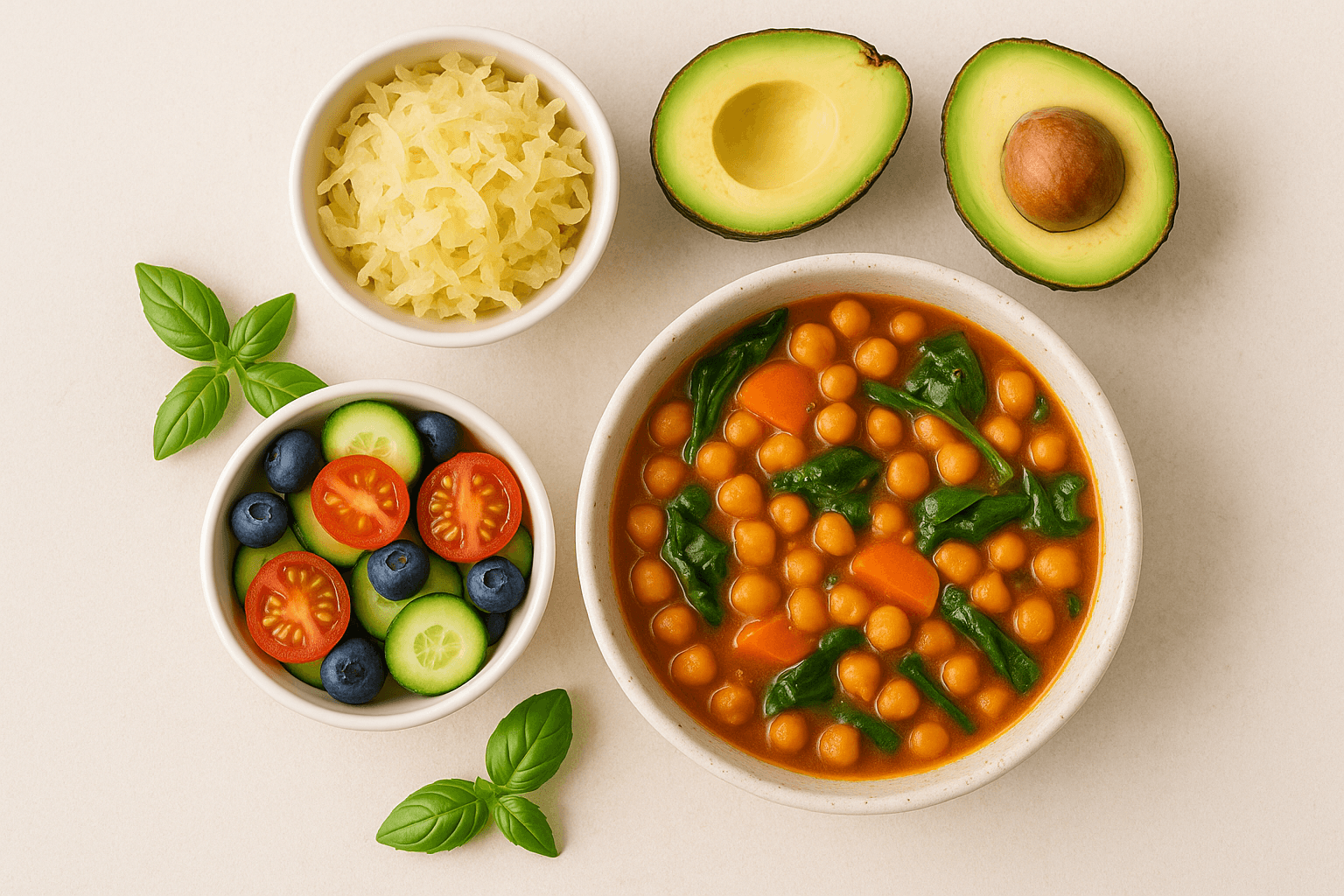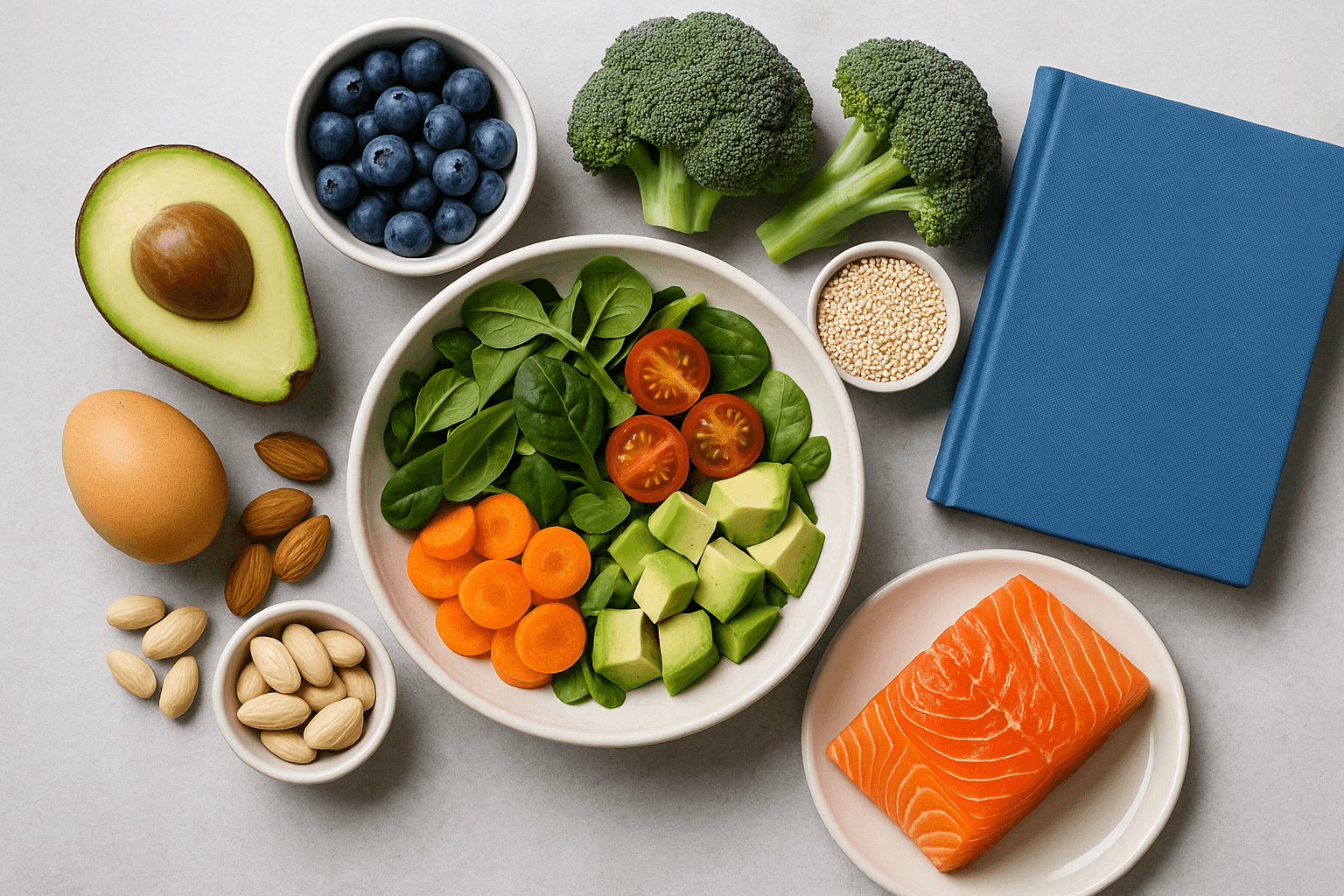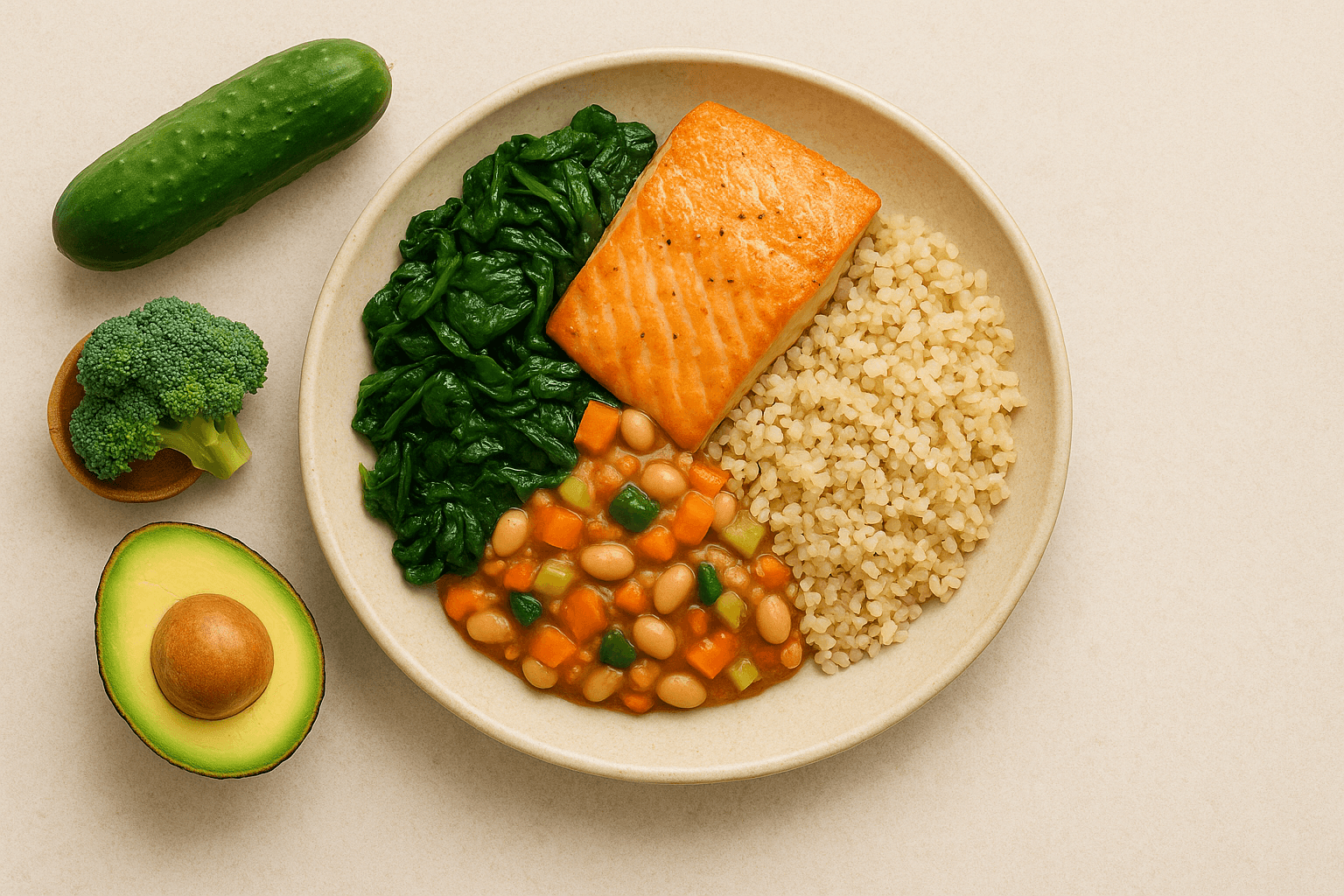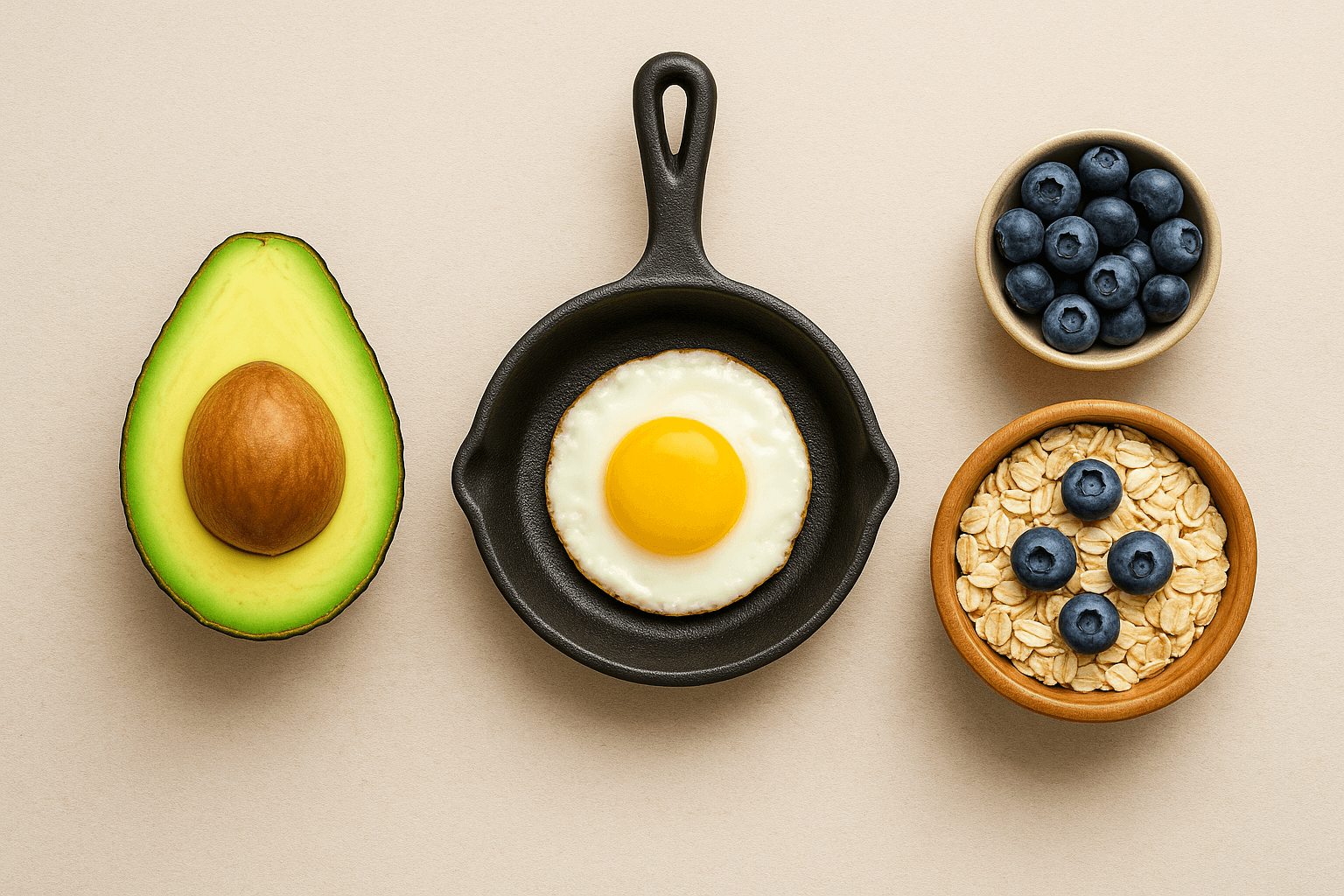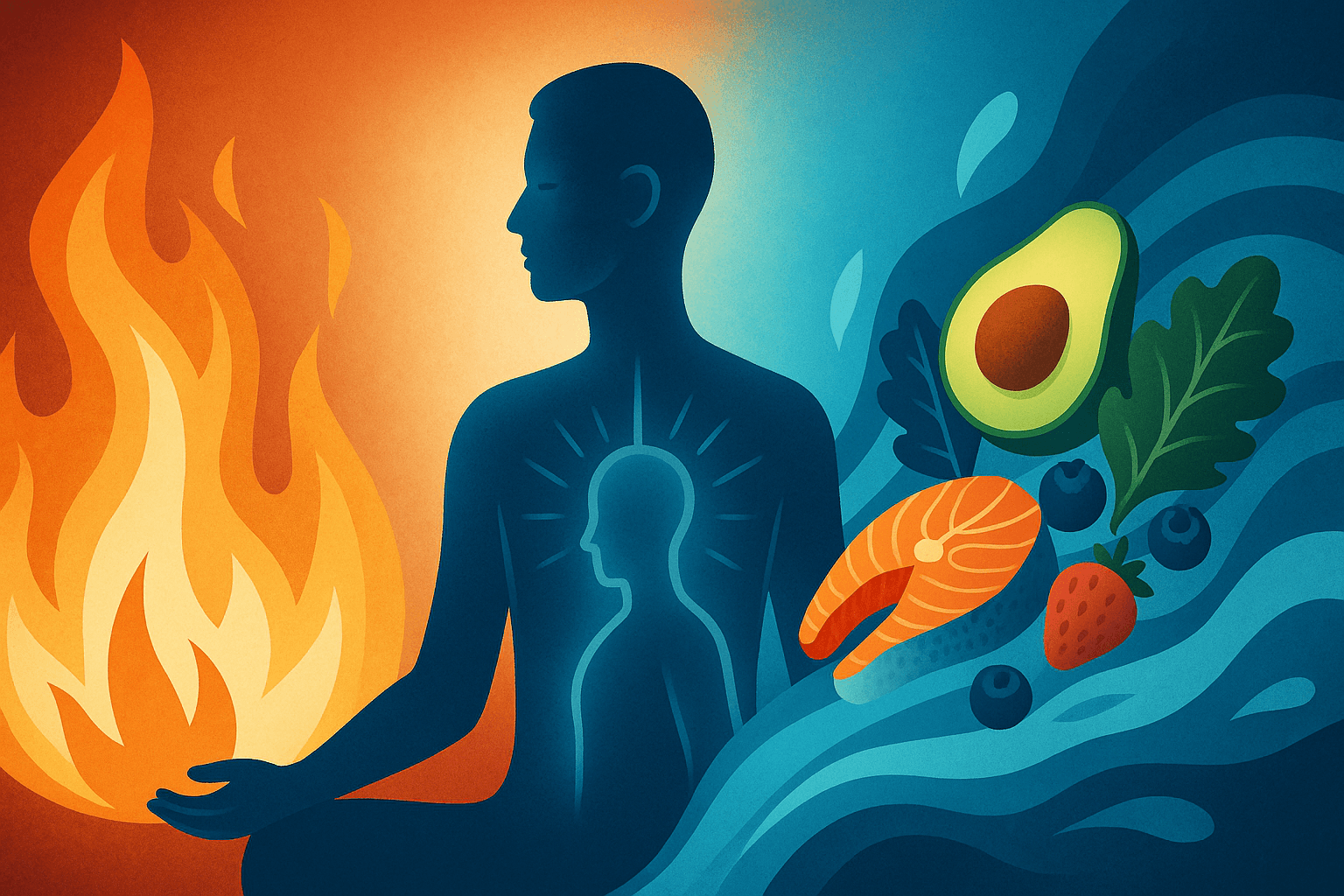Healthy Eating Reimagined: The Science, Simplicity, and Joy of Everyday Nutrition
Published on July 22, 2025
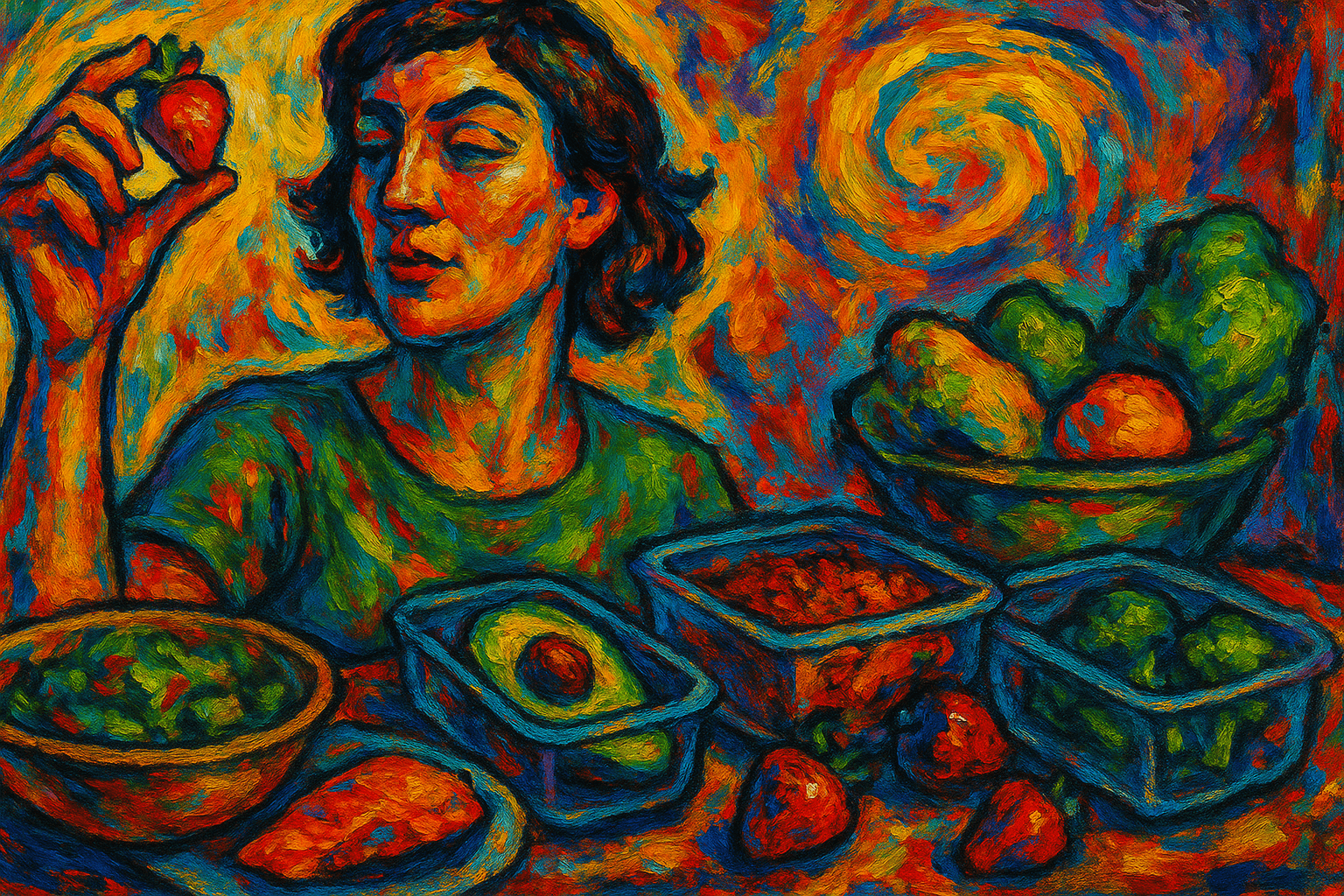
Let’s face it: in a noisy world full of good advice about how to eat, how to be healthy, how to live even — a world full of conflicting information — it’s so easy to get overwhelmed. Every week we have a new headline — “carbs are bad,” “fat is evil,” “eat only raw food,” “intermittent fasting is the answer” — and before you know it you’re just feeling confused about what the truth really is. A little about who I am (in case you don’t already know) I’m just a dietitian who loves food (don’t we all) and is here to tell you, healthy eating doesn’t have to be #complicated, #intimidating, or #joyless. The best things to eat, in fact, are often the most straightforward, the most adaptable — and, yes, surely the most fun.
Eating in a healthy way doesn’t require you to count every calorie, deprive yourself of enjoyment, or be chained to a list of “good” and “bad” foods that can never be touched. It’s about feeding your body and strengthening your mind, and striking the balance that’s best for you. It’s time to cut through all the confusion, when it comes to what to eat for a healthy body and a happier mind.
Reimagining Holistic Health: A Practical and Flexible Method
It is not just what you eat that matters although choosing a variety of high-quality, wholesome options is important.
We can begin by returning to first principles. Healthy eating is ultimately about balance, variety and enjoyment. It’s all about providing your body with what it requires to feel its best, most of the time — and providing it with tons of wiggle room for the fun, spontaneous stuff, social time and the food that makes your heart sing.
Balanced: There is no food group these unhealthy diets don’t have you cut. You create meals from each of the major groups — fruits, vegetables, whole grains, protein sources, and healthy fats — in part because each category provides different, and essential, nutrients.
Nutrient-Dense: Choose foods high in vitamins, minerals, fiber and healthy fats, rather than those packed with added sugars, sodium, or ultra-processed ingredients.
Flexible: Eating healthy isn’t about deprivation — it’s about making room for occasional celebration meals, cultural traditions, travel and the spontaneous pleasures of life. There is no “perfect” way to eat.
Lavish: Food should be a pleasure. Eating healthily isn’t punishment; it is a lifelong relationship with flavor, pleasure and connection.
The Science of Eating: What Really Works
Though nutrition science may seem bewildering, decades of research into what foods may or may not be good for you have produced some broad general findings:
Consume Mostly Whole, Minimally Processed Foods
Whole foods like fruits, vegetables, beans, whole grains, lean meats, eggs, nuts, and seeds are brimming with vitamins, minerals, and fiber. These are foods that feed health and protect against chronic disease. Processed foods (particularly those with added sugars, refined grains, and artificial additives) are best for occasional enjoying.
Pro tip: The less that stands between the farm and your plate in terms of ingredients and steps, the better!
Load Up on Veggies and Fruit at Least Half Your Plate
Vegetables and fruits: Mother Nature’s nutritional dynamos. They are packed with fiber, vitamins, minerals, antioxidants and water. These nutrients promote digestive health, also keep you satiated and lower your risk for heart disease, diabetes and some cancers significantly.
Name of the game: Try to “eat the rainbow,” with a mix of colors signifying varying nutrients. And remember how frozen or canned (with little or no added salt/sugar) can be just as healthy as fresh, especially when some produce is not in season.
Choose Whole Grains
Trade in white bread, rice and pasta for whole grains like brown rice, oats, quinoa, barley and whole wheat. Whole grains offer more fiber, B-vitamins and minerals, but also help with satiety and blood-sugar control.
Quick win: If it’s brown, chewy or contains visible grains and seeds, it’s typically whole grain!
Prioritize Lean Protein
Protein is vital for muscle, immune function, hormones and repair. Include:
Fish and seafood (2–3 times per week if possible)
Skinless poultry, lean cuts of beef, pork or game
Eggs
Dairy or fortified plant-based alternatives
Beans, lentils, tofu, tempeh, nuts and seeds
Tip: Make vegetables and beans the focus of some meals — your heart and wallet will thank you!
Include Healthy Fats Every Day
Fat isn’t the enemy! Healthy fats are essential for brain health, hormone production, and the absorption of vitamins A, D, E and K.
Best sources: Olive oil, avocado, nuts, seeds, oily fish (salmon, sardines, mackerel, for example)
Restrict: Butter, fat meats, coconut oil (saturated fat rich)
Stay away from: Trans fats in lots of processed snacks and fried dishes
Drizzle salads with nuts, and puree avocado to add creaminess; use olive oil both for flavor and nutrition.
Reduce Added Sugar and Salt
Too much sugar and salt can contribute to obesity, heart disease, diabetes and high blood pressure. But that doesn’t mean that you’ll never be able to enjoy dessert or a salty snack again.
Replace soda and juice with water, seltzer, or herbal tea
Limit and savor treats. Save treats for special occasions, and enjoy every bite
Season with herbs, spices, citrus or vinegar instead of salt
Your taste buds will change, and you’ll learn to like flavors as they naturally are.
Mindful Eating and Listen to Your Body
Eating mindfully entails tuning in to cues of hunger and fullness, slowing down and actually enjoying the food you eat. It involves meal times without screens when possible, the flavors and textures of each bite, the way food makes you feel, whether it gives you energy or makes you sluggish or leaves you satisfied.
Healthy Eating Patterns: Real-World Success
The world’s healthiest eating patterns — Mediterranean, DASH, plant-based — have a few common themes: lots of vegetables and fruits, whole grains, healthy fats and some fish and lean protein, and little processed food and sugar. The result? Encouragingly, studies have found that the effects of time-restricted eating are positive, and many guests report experiencing more energy, better weight management, better mood, and a significantly reduced risk of chronic disease.
Key lesson: There is no one “right” way to eat, but all successful methods are based on whole foods, plants and flexibility.
Common Nutrition Myths—Busted!
“Carbs make you fat.” Integral, fiber-rich carbs such as oats, barley and fruit are also necessary for energy, gut health, and brain power. It’s the ultra-processed, sugar-laden foods that cause a problem when consumed in excess.
“All fats are bad.” Not true! Unsaturated fats also (olive oil, avocado, nuts, fish) support heart health and add to a sense of fullness and flavor.
“You have to ‘cleanse’ your system.” Your body detoxes you — the liver and kidneys are great at it. Consume more fiber, hydrate and avoid harsh cleanses.
“Healthy eating costs too much.” As such, classics with the lowest price tags per volume in any grocery store include oats, beans, rice, frozen vegetables, and eggs.
Building a Healthy Plate: No Recipe Required
Half Your Plate Fruits and non-starchy vegetables, That Is!
Add a quarter portion of both protein and lean protein.
Include a quarter plate of whole grains or starchy vegetables.
Include a healthy fat.
Season with herbs, spices, citrus or vinegar.
Sample Dinner: Grilled chicken breast, quinoa sautéed with parsley and a squirt of lemon, roasted broccoli and carrots, half an avocado.
Hydration: Don’t Forget Your Fluids
Water is the most ideal drink for your health. Get at least 6–8 cups a day (more if you’re active or it’s warm). Limit sugary drinks and juices. Herbal teas and black coffee (in moderation) are good choices as well.
Special Needs, Special Solutions
Vegetarians or Vegans: Keep an eye on your B12, iron, calcium, zinc, and omega-3 levels—and plan or supplement accordingly.
Gluten-Free: Build your diet around gluten-free grains, beans, fruits and vegetables.
Diabetes: Balance carbohydrates with protein and fiber; be mindful of portion sizes and eat whole foods.
Healthy Heart: More Fiber, Less Salt, More Healthy Fats, and Loads of Colorful Produce.
Overcoming Obstacles to Healthy Eating
“I’m too busy.”
Prep grains in bulk, chop vegetables in advance and get ahead with proteins on the weekend. Have grab-and-go snacks like fruit, yogurt and nuts on hand.
“I have a sweet tooth.”
Fruit, yogurt with honey or a square of dark chocolate allows you to feed cravings without derailing your diet.
“Healthy food is bland.”
Explore global cuisines. The garlic, ginger, citrus, chili, fresh herbs — the whole point of it is to add huge flavor for very few calories.
“My family is picky.”
Encourage buffet-style meals: people can customize their own bowl, taco or salad with whatever you have available. More buy-in, less mealtime stress.
Healthy Eating on a Budget
Buy in bulk — beans, rice, oats, whole grains.
Frozen fruits and veggies — healthy, budget-friendly, and no waste.
Shop sales, plan your menus around what’s in season.
Cook at home more; restaurant meals can be more expensive and are often less healthy.
Waste less food: Plan your meals, get creative with leftovers and declutter your pantry and fridge.
Mindful Eating: The Secret Ingredient
Eat without distractions. Pay attention to each mouthful. Enjoy the flavors, the textures and how the food makes you feel. Stop eating when you’re comfortably full — you don’t have to “clean your plate” out of habit.
Healthy Eating and Your Mood
The food you eat is influencing your mood, your energy, your ability to focus and your resilience to stress. Diets based on whole foods, healthy fats, and low amounts of refined sugar are good for mood regulation and brain function.
Your mind is nurtured by omega-3 fats (fish, chia, flax).
B vitamins (whole grains, leafy greens, beans) Energizing.
Fermented foods (yogurt, kefir, sauerkraut) feed your gut — your “second brain.”
Sample Day of Healthy Eating
Breakfast:
Oatmeal with blueberries, walnuts, and cinnamon; glass of low fat milk or fortified plant milk
Snack:
Sliced apple with peanut butter
Lunch:
Lentil soup with whole-grain roll; green salad with olive oil and lemon
Snack:
Carrot sticks with hummus
Dinner:
Grilled Chicken breast, quinoa pilaf with roasted vegetables, steamed broccoli, 1 square dark chocolate
Final Thoughts: A Healthier Diet Is A Continual Journey
There is no perfect diet, and you don’t need to follow one. It’s collectively the pattern of foods you choose over weeks, months and years that is most significant. Anything toward balance, variety and pleasure is a win. Enjoy your progress, try new tastes, share meals with friends and family — and, remember, food is both fuel and pleasure. You have all the resources to feed your body and your life, one juicy mouthful at a time.



